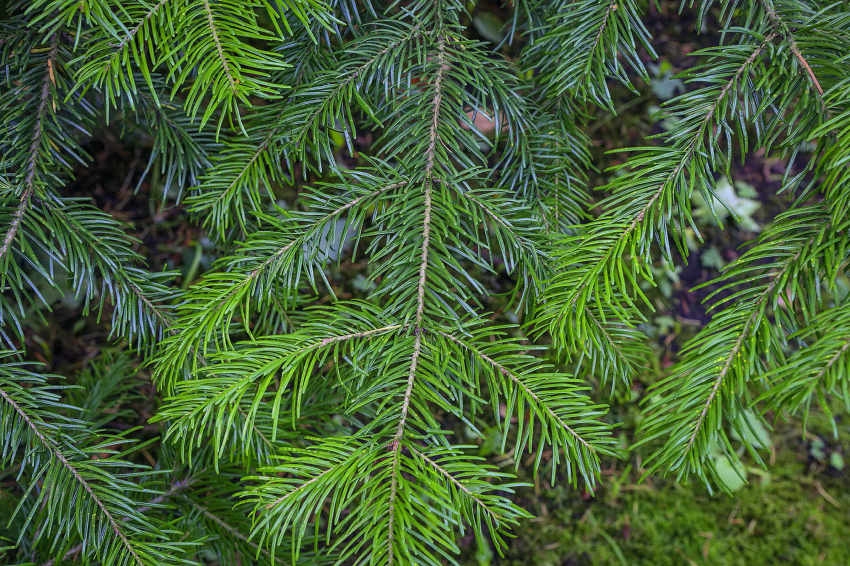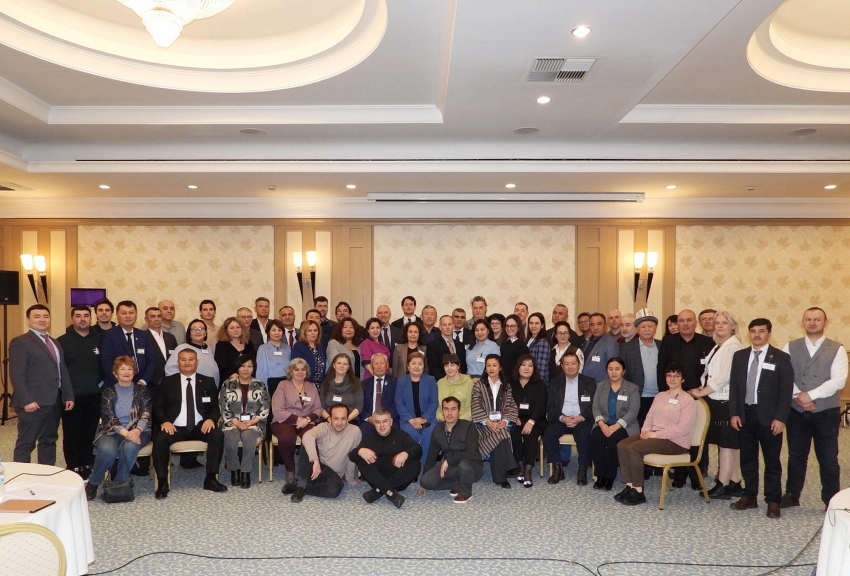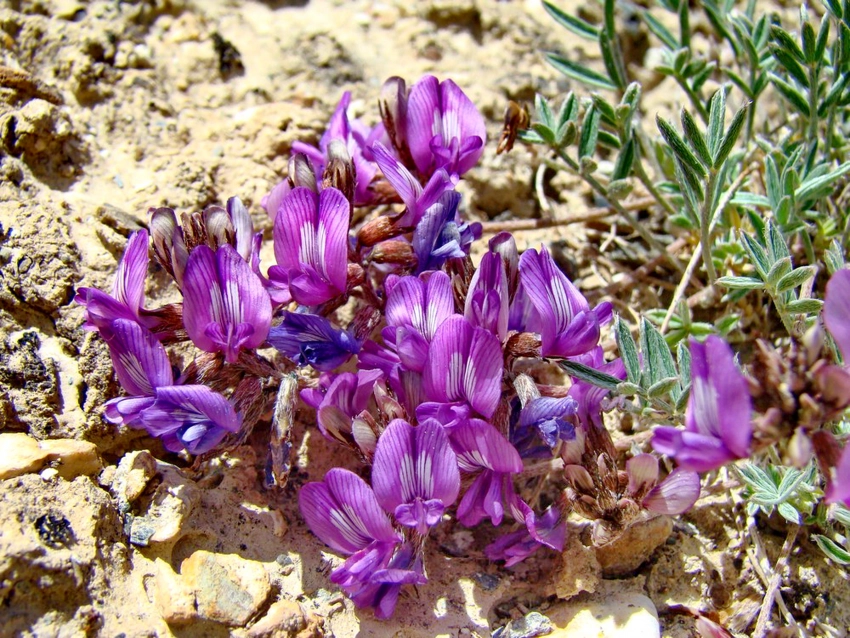KGZ06 Sary-Chelek Key Biodiversity Area

Area: 20000 ha.
Category of KBA: IA
The species that initiated the designation of KBA [and other species under threatened with global extinction, which are present in the KBA, but which have not been confirmed to meet the global KBA criteria]: Abies semenovii. Allium dodecadontum. Allium spathulatum. Allium viridiflorum, Androsace aflatunensis, Bunium sary-cheleki. Campanula eugeniae, Crataegus knorringiana, Crataegus tianschanica, Elisanthe fedtschenkoana. Exochorda tianschanica. Ferula czatkalensis. Ferula inciso-serrata, Hedysarum chaitocarpum, Hyalolaena intermedia, Leibnitzia knorringiana, Malus niedzwetzkyana, Malus sieversii, Onosma brevipilosa, Oxytropis fedtschenkoana, Oxytropis masarensis, Phlomoides urodonta, Pseudosedum ferganense, Saxifraga vvedenskyi, Scutellaria knorringiae, Scutellaria urticifolia, Scutellaria xanthoslphon, Seseli giganteum, Silene eviscosa, Silene fetissovii, Tanacetopsis ferganensis, Tulipa anadroma, Panthera uncia.
Availability of Protection Areas: yes, Sary-Chelek biosphere reserve
Settlements on the territory of the KBA: Arkyt village
Adjacent to the territory of the KBA: The central estate of the reserve is located in the village of Arkyt, 60 km from the regional center - the city of Kerben and 130 km from the nearest railway station Namangan.
General description:Sary-Chelek State Biosphere Reserve is a protected natural area, located on the Chatkal and At-Oinok ridges in the Aksy district of the Jalal-Abad region. The KBA is located in the west of the Kyrgyz Republic, 500 km from Bishkek and 300 km from Osh city. From the north, east and west, the reserve is limited by the Chatkal ridge and its spurs, and in the south it adjoins the Ferghana Valley. The lower boundary of the reserve passes at an altitude of 1200 m above sea level, the highest point is 4247 m (Muztor Peak).
The Sary-Chelek Biosphere Reserve was established in 1959 on an area of 20,810 hectares on the basis of the former Arkyt forestry / forestry reserve to preserve walnut fruit plantations. Subsequently, after the accession of the Aflatun forestry enterprise, the area of the reserve increased to 23,868 hectares. After clarifying the area using digital methods, it was finally accepted as 23,832.8 ha, including 9076.9 ha of forest plantations, 2001.1 ha of open spaces, 435.5 ha of glades and wastelands, 7639.1 ha of pastures, , 1 ha of orchards and vineyards, 93.6 ha of estates, 2.1 ha of marshes, 576.2 ha of waters, 118 ha of glaciers, 3825.8 ha - other.
In 1978, the reserve was listed as a UNESCO Biosphere Reserve. According to the classification of the International Union for Conservation of Nature, it belongs to category Ia - a strict nature reserve. The purpose of the reserve is the comprehensive conservation of the biodiversity of the area, including rare endangered species. The study of the primeval flora and fauna of the Western Tien Shan is also of great importance.
The territory of the reserve is protected from the invasion of cold air masses in winter, which determines the climate with relatively mild winters with little snow and warm, humid summers. The average monthly air temperature of the coldest month (January) is -4.9 °C, sometimes with frosts down to -27 °C. The average air temperature of the warmest month (June) is 21.9 °C, and the maximum is 38 °C (July). The average annual rainfall is 836 mm, with approximately 42% of their annual rainfall occurring in spring, 30% in winter, up to 20% in summer and up to 8% in autumn.
The reserve has a developed hydrological network. The main river is the Kozho-Ata River, which divides the territory of the reserve into eastern and western parts. There is also a relatively large lake Sary-Chelek and 6 more small lakes: Kylaa-Kel, Iyri-Kel, Aram-Kel, Cheychok-Kel, Bakaly-Kel, Tuyuk-Kel.
Among the ridges, snowy peaks, fast rivers and mountain lakes, flowering valleys and alpine meadows, there are huge tracts of relict walnut forests, juniper forests and colorful meadows - and all this, as in a mirror, is reflected in the sky-blue water surface of the delightful alpine lake Sary -Chelek.
Walnut-fruit forests are common in the foothills of the reserve up to a height of 2100 m, fir and juniper groves begin higher, high mountains (after 3000 m) - the kingdom of herbs.
A large number of different types of trees grow in the reserve, including fruit-bearing shrubs, plants, including poisonous and partially listed in the Red Book. A significant part of the reserve is protected by walnut, apple and pear forests.
The territory is inhabited by 157 species of birds, about 40 species of mammals, according to various sources from 30 to 40 species, 7 species of reptiles, various types of fish.
The fauna of the reserve is rich and diverse. Here live: long-tailed marmot, stone marten, Tien Shan white-clawed bear, badger, porcupine, wild boar, roe deer, argali, as well as ibex (teke), muskrat, red deer and many birds - snowcock, dipper, rock partridge, blue bird, penduline tit.
Sary-Chelek Lake
Sary-Chelek is a very picturesque alpine lake located on the southern slope of the Chatkal Range at an altitude of 1940 m above sea level. It is also the largest natural reservoir in the Jalal-Abad region and the entire region of the Ferghana Valley. The length of the lake is 7.5 km, the width is 2 km, the maximum depth is 246 meters, the water area is 507 hectares. The lake was formed 10 thousand years ago as a result of a mountain collapse as a result of a powerful earthquake that occurred many centuries ago, when an incredible collapse blocked one of the tributaries of the Kara-Suu River - Kojo-Ata, and the river flooded the entire valley.
The coasts are steep and steep. Many rivers flowing in often form roaring waterfalls. One river flows out of the lake - Kojo-Ata.
The waters of the lake are inhabited by rudd, marinka, carp, Red listed Turkestan catfish.
The name of the lake from Kyrgyz language is translated as "Yellow bowl". It is very beautiful in autumn, when the trees around turn yellow-orange and, reflecting from the water surface, seem to “color” the lake itself.
Although many legends are associated with the very name of the alpine lake, this is also a legend about a priest who communicated with a certain deity in a golden scaly vestment. On the other hand this is the legend of peacefully galloping horses. "Yellow - sary" can also be associated with a large amount of golden honey, since there are many apiaries. And there is also a legend about a beekeeper who placed beehives on the shore of the lake and fascinated by the color of honey, decided to call the lake “Yellow Bowl”.
Ecology: On the territory of the Sary-Chelek nature reserve there is Arkyt village, where more than a thousand people live, the administrative building of the reserve, a post office, a weather station and a school are also located here.
Residents of the Arkyt village are allowed to graze, hay, set up apiaries, collect nuts and fruits in designated areas for these purposes. Unfortunately, these areas are not fenced in any way, so the area of anthropogenic impact is much wider than the allotted area. There are also problems with poaching. 
The beautiful landscape and 7 mountain lakes of KBA attract the attention of tourists. The flow of visitors in the summer can reach more than 700 people in one day, and even on their own transport. This causes problems in respect of the conservation regime, so the solution of this problem is a priority. The development of organized ecological tourism on the basis of the reserve is the most optimal. It is also important to ensure safety and the availability of professional guides.
Landmarks:
Sary-Cheleck state reserve
Related video










